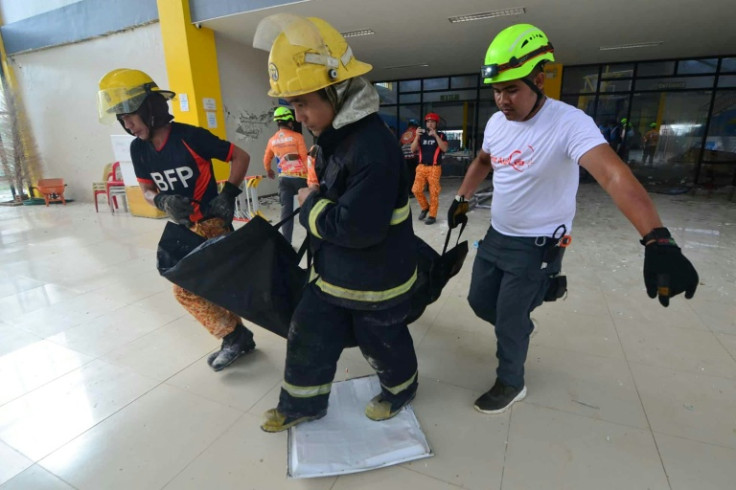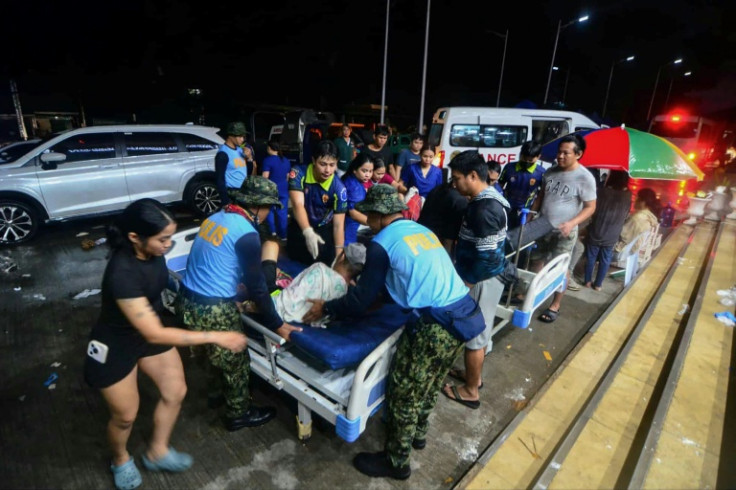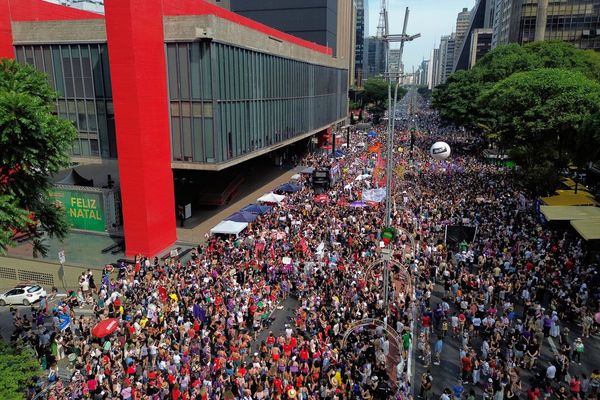
(UPDATED) -- The death toll from the powerful 6.9-magnitude earthquake that tore through central Philippines late Tuesday has climbed to 60 in less than 24 hours, with hospitals in Cebu province overflowing as hundreds of injured residents continue to arrive for treatment.
The tremor struck at 9:59pm local time off the coast of Bogo City, a northern Cebu hub of 90,000 people, according to the US Geological Survey. Entire homes, schools and public buildings crumbled in seconds, forcing families to flee into the night while rescue teams battled collapsed roads and aftershocks to reach the hardest-hit areas.
Patients Treated in Makeshift Wards
At Cebu Provincial Hospital, the strain was visible as medical staff moved patients outside into tents set up on the driveway. Injured children wept, adults shouted in pain and the dead were carried away in body bags as the facility buckled under pressure.
Cebu Governor Pamela Baricuatro confirmed that many patients were being treated outdoors. The Office of Civil Defence warned the situation remains unstable, with deputy administrator Rafaelito Alejandro saying casualty figures are 'very fluid' as reports from isolated villages continue to come in.
Hospital officials listed 53 confirmed deaths, 30 of them from Bogo, and at least 154 people injured.
Survivors and First Responders
Stories of survival emerged amid the devastation. Richard Guion, 39, recounted how his teenage son pulled him and his wife from under a collapsed wall. 'When the cement collapsed, I called out to him,' Guion said, grateful his son had ignored instructions to sleep early. His wife suffered a broken foot, while his own arm was heavily injured.
Rescuers admitted the workload was overwhelming. 'Some patients had to be moved to other hospitals because the one in Bogo was already overflowing,' said Teddy Fontillas, a 56-year-old rescuer. 'I'm already struggling but what we are doing is necessary to help our patients.'
Cebu Shaken by Dramatic Scenes
Social media footage revealed the scale of destruction: the belfry of a Catholic church on Bantayan island collapsing as locals looked on in shock; motorcyclists on a Cebu bridge forced to grip railings as the structure swayed violently; and in Cebu City, shoppers scattering as the ceiling of a mall food court gave way.
Witnesses described the terrifying moments. 'It was as if the Earth stopped spinning. And then the mall started shaking,' said 21-year-old Jayford Maranga, who escaped with only minor injuries.
Roads Cracked, Power Cut
Rescue officials have warned that more victims may still be trapped under rubble. The Philippine Institute of Volcanology and Seismology recorded more than 370 aftershocks overnight, making search operations dangerous and forcing residents to sleep outdoors.
Power was knocked out across Cebu and neighbouring islands but partially restored by midnight. In Tabogon, AFP journalists saw deep cracks cutting across roads, hampering relief trucks trying to deliver aid.
A Nation at Risk
The Philippines is one of the world's most disaster-prone nations, lying on the Pacific 'Ring of Fire'. Strong earthquakes strike without warning, often compounding the impact of typhoons and volcanic eruptions that hit the archipelago each year.
Authorities warn the death toll from this week's quake could rise further as rescue teams gain access to remote barangays still cut off by damaged infrastructure.

Aftershocks and Power Outages
The Philippine Institute of Volcanology and Seismology (Phivolcs) said the region was rattled by nearly 400 aftershocks overnight. Power cuts were reported across Cebu and nearby islands, though the National Grid Corporation said electricity had been restored to several major provinces shortly after midnight.
'It was so strong. We saw our locker moving from left to right, we felt slightly dizzy for a while but we are all fine now,' firefighter Joey Leeguid in San Fernando told AFP.
Eyewitness Accounts
Residents described panic as the ground shook violently.
'I heard a loud booming noise from the direction of the church then I saw rocks falling from the structure,' said Martham Pacilan, 25, who was at Bantayan town square when the belfry collapsed. 'Luckily no one got hurt. I was in shock and panic at the same time but my body couldn't move.'
Agnes Merza, a 65-year-old carer in Bantayan, said her home sustained cracks: 'It felt as though we would all fall down. The neighbours all ran out. My two teenage assistants hid under a table because that's what they were taught in the boy scouts.'
Officials Urge Calm
The Cebu provincial government reported collapsed commercial buildings and schools, with roads also sustaining damage. Governor Pamela Baricuatro urged residents in a live address to 'stay calm and move to open areas; keep away from walls or structures that may collapse and stay alert for aftershocks.'
The Pacific Tsunami Warning Center confirmed there was no tsunami risk.
Quake-Prone Region
The Philippines sits on the Pacific 'Ring of Fire', a seismically active belt where earthquakes and volcanic eruptions are common. While most tremors are too weak to be felt, stronger quakes strike without warning, leaving communities vulnerable.
This is a developing story. Follow for more updates.







